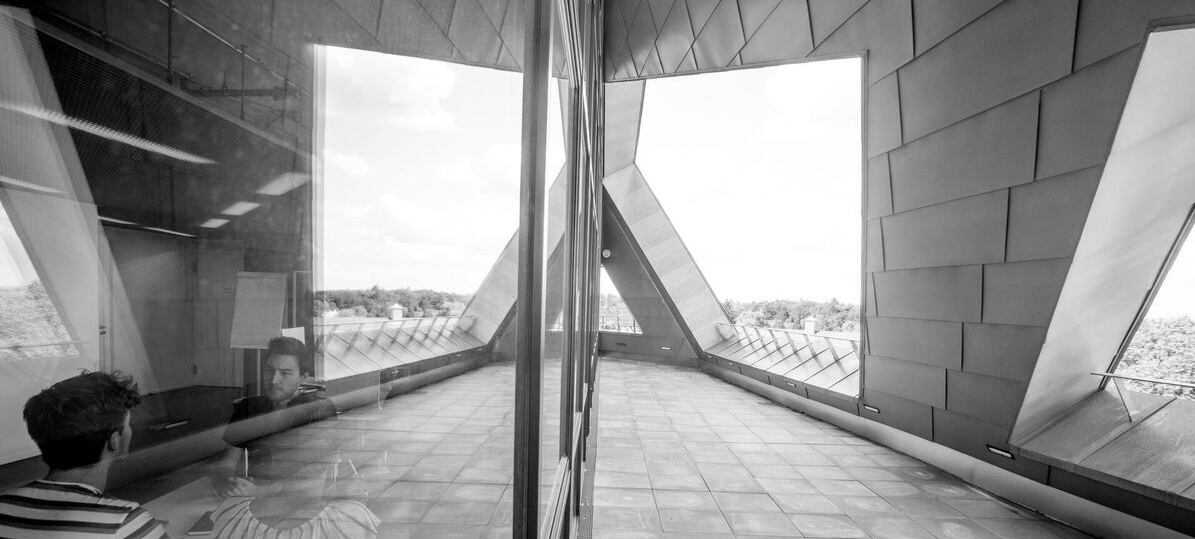The importance of micromobility sharing systems for solving the car problem – a focus on different cultures in Lüneburg, Gainesville, and Presidente Prudente.
Hello! We are Priscilla and Aleksandar from the University of Leuphana in Lüneburg, Germany. We have been working together in the framework of the Culture, sustainability and intercultural communication virtual exchange project.
☺ Fun fact: Priscilla actually bought herself a bike recently to cycle more, and Aleksandar has an irrational fear of reckless cyclists.
(Aleksandar)
Have you ever thought about how our regular travel affects the environment? Although it’s simple to ignore, cars alone account for an astounding 48% of all vehicle pollution, meaning that transportation has a significant role in carbon emissions (Statista, 2023). Let’s admit that there are good reasons why many people do not select riding as their primary form of transportation before delving into the numbers. A number of factors come into play, including safety concerns, the expense and difficulty of purchasing and maintaining a bike, and a lack of infrastructure.
The urgency of the matter increases when we look at the statistics. Did you know that transportation accounts for 21% of global CO2 emissions (Fleck 2023)? It’s critical to consider the effects of our daily decisions as we rush to produce 127 million new cars by 2030, increasing the number of vehicles worldwide to an astounding 2 billion by 2035 (The world counts, 2024).
Now, before you feel compelled to defend your dependency on automobiles, let’s examine a substitute that solves environmental issues and provides a workable answer to some of the difficulties involved with bicycling. Envision a future in which towns adopt micromobility cultures and establish unparalleled infrastructure, rendering bicycling not just an environmentally sustainable option but also a practical one.
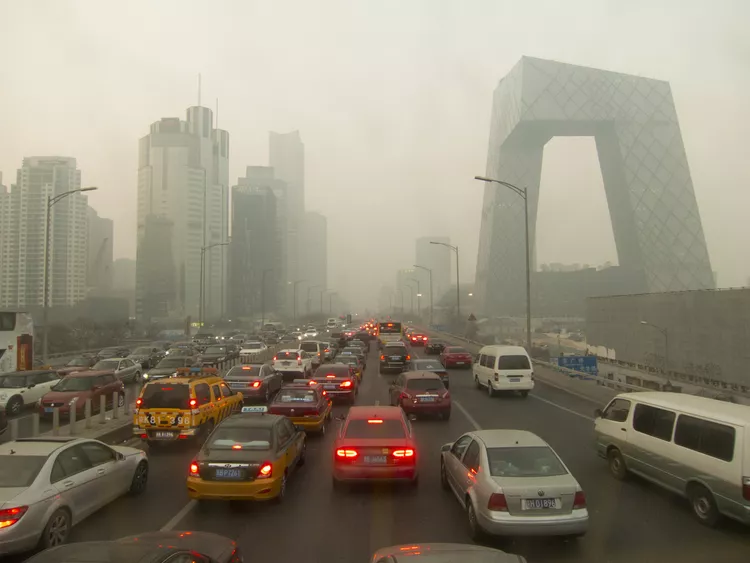
We’ll explore three cities in more detail in this blog post: Presidente Prudente in Brazil, Gainesville in Florida, and Lüneburg. We’ll look at how they address the obstacles that come with bicycling and what can be done to turn our cities into lush paradises. Let’s ride this adventure towards a sustainable future together, recognizing the obstacles along the way and seizing the opportunities.
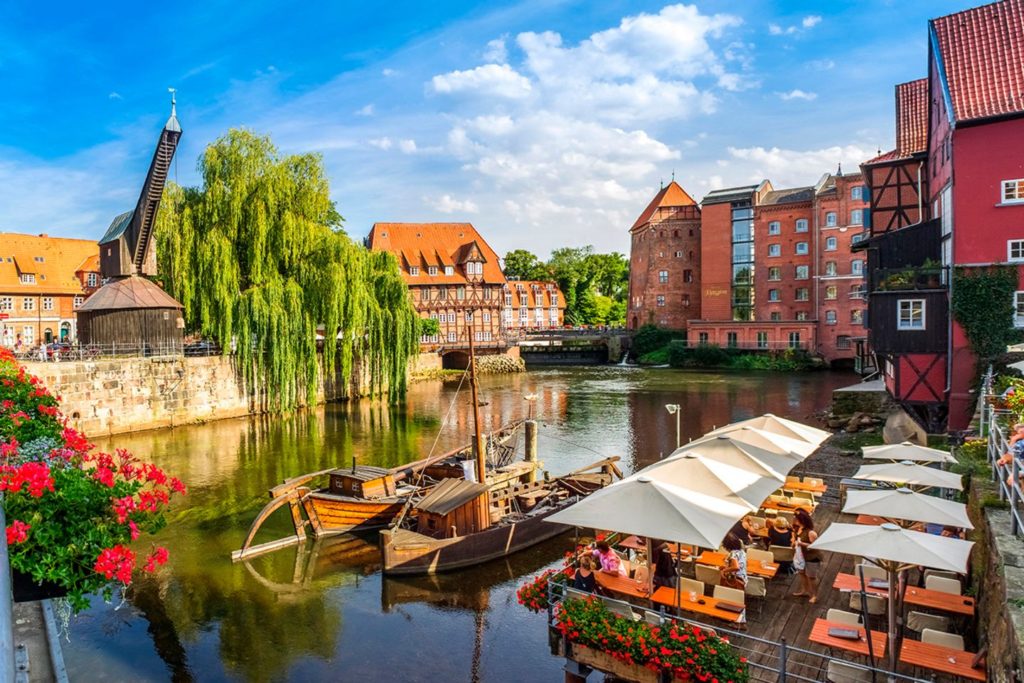
Lüneburg: A Model of Sustainable Living and Cycling Culture (Priscilla)
Lüneburg, nestled in the scenic landscapes of northern Germany, embodies a commitment to eco-friendly living that goes beyond just buzzwords. Picture a city where sustainability isn’t just a concept but a way of life, where encountering a sea of students and workers cycling to school and work during rush hour is not a rarity but an everyday sight on the bustling streets. According to research by Hunecke et al. (2020), younger demographics show a greater tendency for adapting their mobility behaviors, a trend particularly pronounced in Lüneburg thanks to its lively student community, constituting one-third of the town’s population. The enthusiasm for sustainability within the social circles of these youths spreads far and wide, influencing people from all walks of life.
Push & Pull Strategy
Leuphana Universität Lüneburg as the only university in this vibrant student town, plays an important role in shaping the local sustainability scene. In a Lüneburg transdisciplinary research project „Energy system transformation & mobility,“ the university integrates the „Push and Pull strategy“ into the urban mobility framework (Opel and Schomerus, 2015). This strategy involves imposing stricter regulations on unsustainable modes of transportation while actively promoting sustainable mobility such as promotion of cycling, electric mobility, and local public transport.
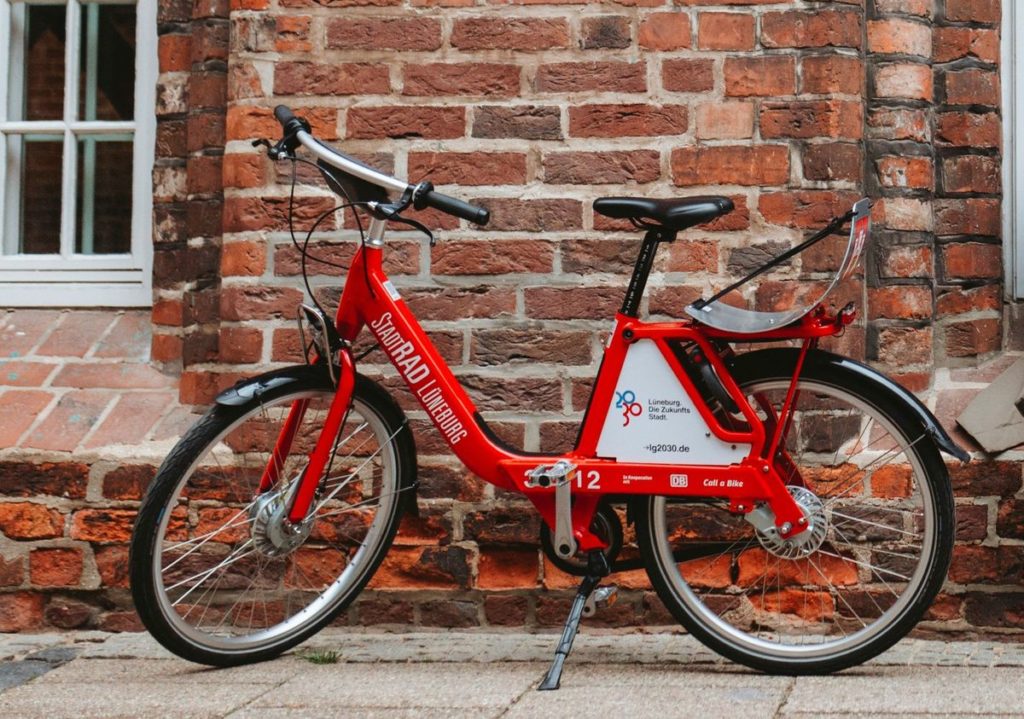
StadRAD, a citywide rental service since 2013, provides free daily ride sessions for students. Conveniently available at Leuphana locations, the city center, and the train station, StadRAD acts as the main micromobility transport in town that ‘combines comfort and flexibility with environmental awareness and fantastic prices’, offers a ‘hassle-free way’ to commute.
Community-based green movement
Sustainability is deeply ingrained in the identity of Leuphana University, with a firm dedication to achieving climate neutrality (Opel et al., 2017). Within this environmentally conscious campus environment, students gain a heightened awareness of how their daily decisions, particularly those related to transportation, impact the environment. This awareness fosters a sense of responsibility, prompting students to make more thoughtful and sustainable choices.
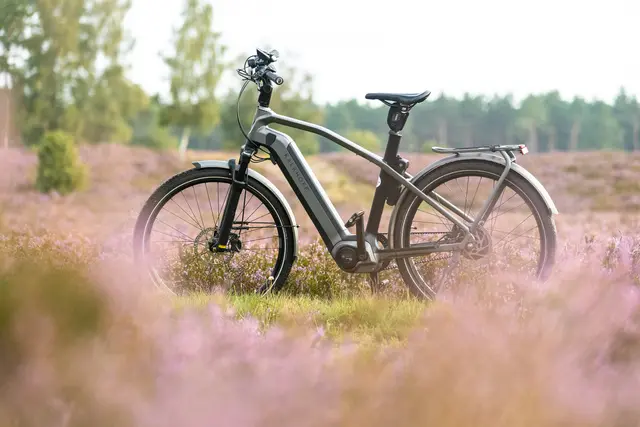
To bolster cycling participation, students and university staff can engage in the „Stadtradeln“ summer campaign. Additionally, they can join outdoor activities like group road cycling or mountain biking, promoting communal biking. Another sustainable mobility initiative at Leuphana is the „Beautiful Cycle Routes“ project, which aims to provide cyclists with alternative scenic paths away from noisy main roads. By highlighting picturesque routes through Lüneburg and surrounding areas through an online bicycle map, the project aims to make biking to campus more appealing and safer.
Yet, beyond the wheels turning on bikes, it’s about fostering a community where every individual contributes to a shared vision of a sustainable future. Gainesville and Presidente Prudente can draw inspiration from Lüneburg’s historical connection with cycling, fostering a similar cultural shift toward embracing bicycles as an integral part of their identity.
Gainesville, FL: Embracing Micromobility for Sustainable Urban Transit (Aleksandar)
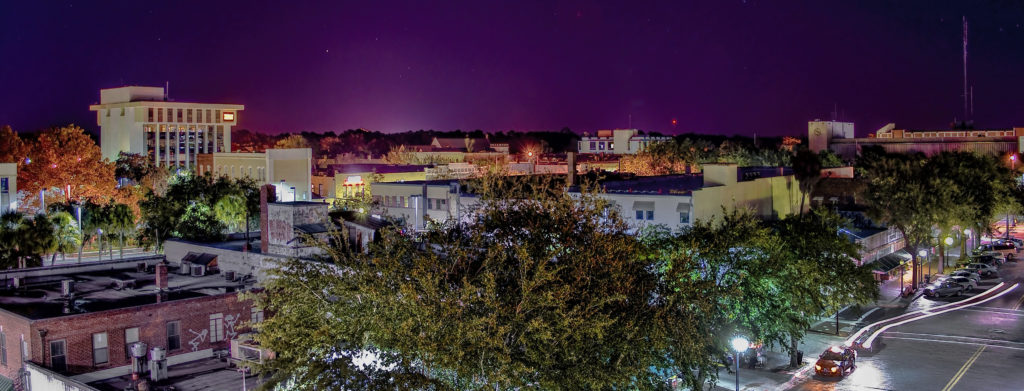
Situated in the center of Florida, Gainesville is working toward a sustainable urban makeover. The city is seeing a revolution in micromobility as a result of a specific program that looks for alternatives to unsustainable forms of transportation (gainesvillefl.gov, 2024). Businesses such as Bird, Spin, and Veo provide bike-sharing services; 500 trips are made every day, demonstrating the increasing acceptance of environmentally friendly transportation (Gainesville | Micromobility Dashboard, 2024).
The University of Florida (UF) has jumped on this bandwagon and is working with the city to encourage environmentally friendly transportation on campus. Riders can leave their bikes or e-scooters nearly anywhere thanks to a network of well-located bike parking spaces that allow smooth transit (Micromobility Services, 2024).
But that’s not where the alternatives end. Students who prefer the convenience of renting a bike for a semester or the entire academic year might choose Gator’s bike rentals program, ‚Gator Gears,‘ for those who want the luxury of a personal bike (Gator Gears » UF Bikes, 2024).
Examining Culture and Mobility
Many people associate „bike culture“ with places like Germany, the Netherlands, or Denmark, where riding is a deeply embedded part of the history and way of life (Pucher & Buehler, 2008). Gainesville may not have the same cycling culture as these nations, but it has recently embraced micromobility in an effort to lower carbon emissions from automobiles.
In spite of its utilitarian orientation, riding is nevertheless very common in Gainesville. Well-known cycling routes like O’Leno and San Felasco Hammock Preserve State Park give riders lots of chances to pedal hard. The ‚Horse Farm Hundred,‘ a picturesque ride through the countryside past horse farms, is one of the city’s many cycling events (Gainesville Cycling Festival – Horse Farm Hundred,2024).
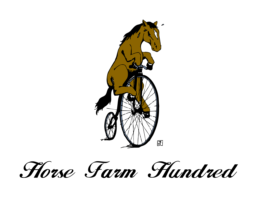

Figure 6: Gainesville Cycling Festival – Horse Farm Hundred. Source: Gainesville Cycling Festival.

The University of Florida’s culture is permeated with a passion for riding that transcends the municipal bounds. UF is dedicated to creating a campus that is bike-friendly, working with the city’s micromobility program and being recognized by the League of American Bicyclists as a Bicycle Friendly University. Students actively engage in programs that promote micromobility, making it a tangible facet of the university’s climate change activism (Transportation – Sustainability, 2023).
Essence of micromobility:
The idea of micromobility is important to the sustainable development of Gainesville. Micromobility, a new paradigm that includes bikes, e-bikes, and scooters, offers affordable, readily available, adaptable, and sustainable travel (Shaheen et al., 2020). The fundamental idea behind this idea is to replace motor cars with these environmentally beneficial alternatives for short-distance transportation (Clewlow, 2018; Tiwari, 2019).
Gainesville continues its journey
Gainesville is tackling the auto issue head-on with its big-hearted initiatives. Infrastructure development and sustainability objectives are unquestionably important actions. The municipal government must understand, though, that infrastructure and regulations by themselves might not be sufficient to significantly boost micromobility (Welleman, 1997). In order to genuinely spur change, Gainesville needs to foster a culture that values micromobility and elevates biking above regular cars as a mode of transportation.
Overcoming Hurdles: Toward Sustainable Mobility in Presidente Prudente (Priscilla)
In stark contrast to the sustainable initiatives thriving in cities like Lüneburg and Gainesville, Presidente Prudente grapples with significant challenges that hinder the adoption of eco-friendly transportation. The automobile industry often takes precedence in Brazil, according to the Institute of Applied Economic Research (IPEA), 80% of street space in Brazilian cities is dedicated to cars and other private vehicles. While cultural shifts toward sustainable means of transport are imperative, mirroring that only 30% of Brazilian people use cycling as their daily mobility. Like many developing cities in Brazil, Presidente Prudente faces additional hurdles due to its topography, intense traffic, and a lack of effective public transportation. Also, the cultural disconnect further intensified the situation, with little encouragement for bicycle use.
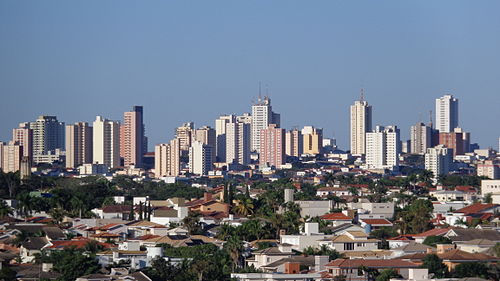
However, not everything is lost. In a city where cultural shifts are as crucial as infrastructural developments. Bills aimed at expanding cycle paths in central areas and implementing a bicycle rental system in parks and universities emerge as practical steps toward transforming the urban landscape. The idea of securing a left lane exclusively for cyclists on the main avenues during weekends can be re-implemented as a small but significant stride toward reclaiming urban spaces for sustainable mobility. We have witnessed Lüneburg and Gainesville as living examples of how a city can transform into a green heaven. We should be aware there are still cities like Presidente Prudente that heavily rely on emission-riched transportation for daily commute, and it would still be a long way to craft a culture that resonates with a truly sustainable way of living.
Social network theory in action (Priscilla)
Before jumping into the solution part, let us explore the potential of social network theory in shaping transport mode choice, particularly in fostering a cycling culture in countries where such a culture is not well-established (Goetzke, 2006). The essence is that the more people hop on their bikes, the cooler and more appealing cycling becomes for everyone else. Think of it as a positive ripple effect in transportation choices, often termed as demand-side network externalities or simply, bicycling culture. This phenomenon is all about the power of social influence in steering our preferences when it comes to getting around. When all your friends suddenly cycle to university every day, you will see cycling as more than just a mode of transport— it’s a lifestyle choice gaining traction.
Lüneburg is the prime example of the social network theory in action. With widespread enthusiasm for cycling and well-designed infrastructure supporting it, biking becomes increasingly attractive as more people embrace it, creating a positive feedback loop. Additionally, living in a community that prioritizes sustainability serves as an additional motivator for making eco-friendly decisions. A similar cycling culture, though perhaps less pronounced, can be observed in Gainesville.
On the other hand, in Presidente Prudente, where cultural preferences lean towards walking or car use, the social network effects for bicycling are not as significant as in Lüneburg. Lack of cycling infrastructure and a preference for other modes contribute to a different dynamic.
Empowering individuals through tailoring mobility targets (Priscilla)
Various cities are already implementing the push and pull measures that we mentioned in Leuphana’s sustainable mobility concept, and combining them to enhance the effectiveness of promoting micromobility in the city.
However, Millonig et al. (2022) argues that the „Push & Pull“ strategy relying solely on extrinsic positive and negative reinforcement, such as incentives or penalties may not lead to a sustainable change in one’s behavior because they may not be fully aware of the concrete effects of their habitual and possible alternative behavior patterns. They suggested that tailoring mobility targets to individuals‘ daily realities, such as adjusting them based on daily commitments or socio-economic backgrounds, can offer a practical framework for setting and adjusting specific actions towards more sustainable behavior. By doing so, individuals can better understand the impact of their daily mobility choices and maintain their sense of control, therefore more motivated to continue these sustainable behaviors.
Catalyzing cycling cultural shifts (Priscilla)
In Lüneburg and Gainesville, where vibrant cycling cultures already flourish, it’s crucial to ensure that this isn’t merely a passing trend, but a lasting shift in behavior. Long-term solutions such as allowing individuals to set realistic mobility goals tailored to their daily lives can deepen their understanding of the impact of their mobility choices. This approach empowers individuals to feel more in control of their decisions, rather than simply cycling due to social pressure or a fleeting trend.
In cities like Presidente Prudente, where a vibrant biking culture is yet to take root, social network theory emerges as a powerful catalyst for change. Here’s where you come in – you are the key to sparking this transformation. While it may sound like a cliché initially, your involvement, along with that of others, in the cycling trend sets off positive social ripple effects. Your individual actions set the stage for the formation and strengthening of a robust biking culture. In the later stages of this transformative process, you’ll find that advertising and government intervention play crucial roles. Growing numbers of cyclists create a demand for improved biking facilities, prompting governments to invest in infrastructure upgrades. Simultaneously, advertising campaigns can amplify the positive image of cycling, making it an even more appealing and popular choice.
Steering towards tomorrow (Aleksandar)
Our journey toward sustainable urban living takes us through the landscapes of Presidente Prudente, Gainesville, and Lüneburg. Every city creates its own story, from the energetic eco-conscious community of Lüneburg to the micromobility revolution in Gainesville and the lack thereof faced by Presidente Prudente. The theme of social network theory shows up as a powerful catalyst for change, highlighting the group effect of personal decisions. No matter how prevalent cycling is in the city right now, your participation creates a positive social ripple effect that shapes the future of sustainable mobility. Looking ahead, one option for future study could be to compare the success of policy measures targeted at fostering sustainable mobility in different urban contexts such as Presidente Prudente, Gainesville, and Lüneburg. We pedal together toward a common goal of more environmentally friendly, greener cities where each person plays a part in ensuring a sustainable future.

References
Brüggen, I. (2023, September 4). Sustainability in Leuphana. Leuphana University Lüneburg.https://www.leuphana.de/en/university/sustainable.html
Brüggen, I. (2024, January 24). Sustainable mobility. Leuphana University Lüneburg.https://www.leuphana.de/en/university/sustainable/sustainable-mobility.html
Clewlow, R., 2018. The Micromobility Revolution. https://medium.com/populus-ai/the-micromobility-revolution-95e396db3754(accessed 7.10.20)
Fleck, A. (2023, September 22). Cars cause the biggest share of transportation CO2 emissions. Statista Daily Data.https://www.statista.com/chart/30890/estimated-share-of-co2-emissions-in-the-transportation-sector/ (accessed on 7.01)
Gainesville | Micromobility Dashboard. (2024). https://public.ridereport.com/gainesville?x=-82.3508398&y=29.6895377&z=11.53
Gainesville Cycling Festival – Horse Farm Hundred. (2024). Visit Natural North Florida.https://www.naturalnorthflorida.com/events/gainesville-cycling-festival-horse-farm-hundred/
Gator Gears » UF Bikes. (2024). https://bikes.ufl.edu/gg/
Goetzke, F., & Rave, T. (2010). Bicycle use in Germany: Explaining differences between municipalities with social network effects. Urban Studies, 48(2), 427–437. DOI
Millonig, A., Rudloff, C., Richter, G., Lorenz, F., & Peer, S. (2022). Fair mobility budgets: A concept for achieving climate neutrality and transport equity. Transportation Research Part D: Transport and Environment, 103, 103165. DOI
Micromobility services. (2024). https://gnvbikeped.com/micromobility-services
Opel, O., & Schomerus, T. (2015). Nachhaltige Mobilität: Eine Autofreie Zukunft Ist Machbar. DOI
Opel, O., Strodel, N., Werner, K. F., Geffken, J., Tribel, A., & Ruck, W. K. L. (2017). Climate-neutral and Sustainable Campus Leuphana University of lueneburg. Energy, 141, 2628–2639. DOI
Pardue, D. (2015). Understanding São Paulo’s bicycle wars. Metropolitics. https://metropolitics.org/Understanding-Sao-Paulo-s-Bicycle.html
Pez, P., Brüggen, I., & Seidel, A., Nachhaltige Mobilität an Hochschulen 98–101 (2022).
Pucher, J., & Buehler, R. (2008). Making Cycling Irresistible: Lessons from The Netherlands, Denmark and Germany. Transport Reviews, 28(4), 495–528. DOI
Shaheen Susan, P., Cohen, A., Chan, N., Bansal, A., 2020. Chapter 13 – Sharing strategies: carsharing, shared micromobility (bikesharing and scooter sharing), transportation network companies, microtransit, and other innovative mobility modes. eScholarship, University of California.
Statista. (2023, September 22). Breakdown of CO₂ emissions in the transportation sector worldwide 2022, by sub sector.https://www.statista.com/statistics/1185535/transport-carbon-dioxide-emissions-breakdown/ (accessed on 7.01)
The world counts. (2024). https://www.theworldcounts.com/challenges/consumption/transport-and-tourism/cars-impact-on-the-environment (accessed on 7.01)
Tiwari, A., 2019. Micro-mobility: the next wave of urban transportation in India. https://yourstory.com/journal/micro-mobility-edc6x8f1y1 (accessed 7.10.20)
Transportation – sustainability. (2023, December 18). Sustainability. https://sustainable.ufl.edu/campus-initiatives/transportation/
Welleman, T. (1997). CHAPTER 13: THE DUTCH BICYCLE MASTER PLAN 1990-1996. FROM THE GREENING OF URBAN TRANSPORT, EDITION 2. https://trid.trb.org/view/501883
Zühlsdorff, H. (2022, March 8). Leuphana as an example of sustainable mobility . Leuphana University Lüneburg.https://www.leuphana.de/en/university/events/press-releases/single-view/2022/03/08/leuphana-as-an-example-of-sustainable-mobility.html
Figures:
Bigstockphoto. (2024). A slogan on an activist’s placard reads „what we stand for is what we stand on“ during an environmental [Photograph]. https://www.bigstockphoto.com/image-330795826/stock-photo-a-slogan-on-an-activists-placard-reads-what-we-stand-for-is-what-we-stand-on-during-an-environmental
Facebook. (2024). [Video]. https://www.facebook.com/watch/?v=467545991347837
Festival.Gccfla. (2024). Horse Farm Hundred. https://festival.gccfla.org/horse-farm-hundred/
Flickr. (2015). [Photograph]. https://www.flickr.com/photos/miamiboy/19830198623
Geo. (2024). Ein Rundgang durch Lüneburg. https://www.geo.de/reisen/reiseziele/1220-rtkl-reisetipps-ein-rundgang-durch-lueneburg
Lüneburger Heide GmbH. (2022). Fahrrad. Lüneburger Heide. https://www.lueneburger-heide.de/natur/fahrrad
Stadtradlueneburg. (2024). Start. https://stadtradlueneburg.de/de/start
Treehugger. (2022). Cars are causing air pollution we breathe, new study finds. https://www.treehugger.com/cars-are-causing-air-pollution-we-breathe-new-study-finds-4856825
University of Florida. (2024). University of Florida. US News. https://www.usnews.com/best-colleges/university-of-florida-1535
Wikipedia. (2024). Presidente Prudente. https://en.wikipedia.org/wiki/Presidente_Prudente

